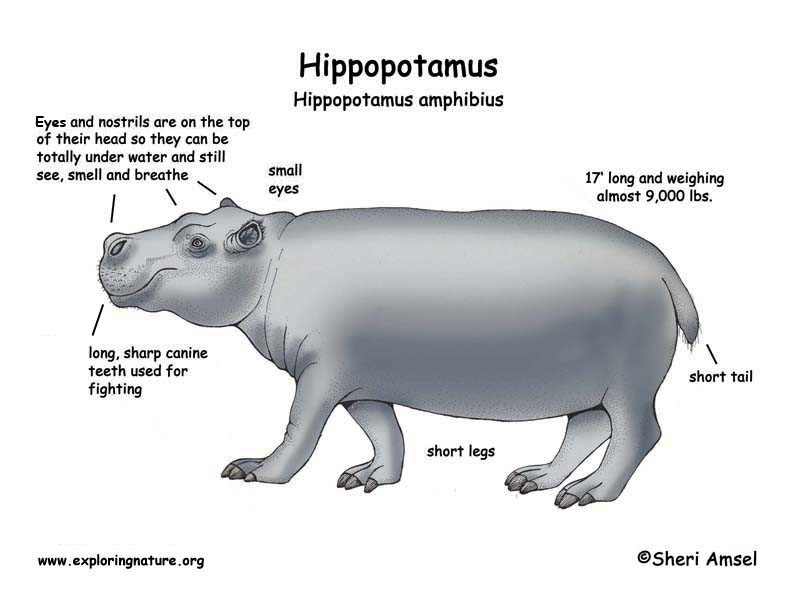

They are found mostly in East Africa. They used to be found all over the African grassland region but their range is shrinking as Africa's human population expands into their habitat.
They live in a deep lake, pond, or river out on the grasslands (savannah).
They can measure up to 17 feet long and weigh almost 9,000 pounds. Their eyes and nostrils are on the top of their head so they can be totally under water and still see, smell and breathe. They have long, sharp canine teeth that are very dangerous. Hippos often fight and seriously hurt each other.
They are active mostly at night (nocturnal). They gather in groups of up to 30 hippos.
They eat only plants (herbivore), mostly grasses.
They fall prey to crocodiles, lions and man.
Females are pregnant (gestation) for about 8 months and have one baby. Calves can nurse underwater and ride on their mother's back as she swims along.
Hippos may live up to 50 years in the wild. They are listed as a "vulnerable" species.
Kingdom: Animalia
Phylum: Chordata
Subphylum: Vertebrata
Class: Mammalia
Order: Artiodactyla
Family: Hippopotamidae
Genus: Hippopotamus
Species: Hippopotamus amphibius
When you research information you must cite the reference. Citing for websites is different from citing from books, magazines and periodicals. The style of citing shown here is from the MLA Style Citations (Modern Language Association).
When citing a WEBSITE the general format is as follows.
Author Last Name, First Name(s). "Title: Subtitle of Part of Web Page, if appropriate." Title: Subtitle: Section of Page if appropriate. Sponsoring/Publishing Agency, If Given. Additional significant descriptive information. Date of Electronic Publication or other Date, such as Last Updated. Day Month Year of access < URL >.
Amsel, Sheri. "Hippopotamus" Exploring Nature Educational Resource ©2005-2024. March 27, 2024
< http://www.exploringnature.org/db/view/381 >

